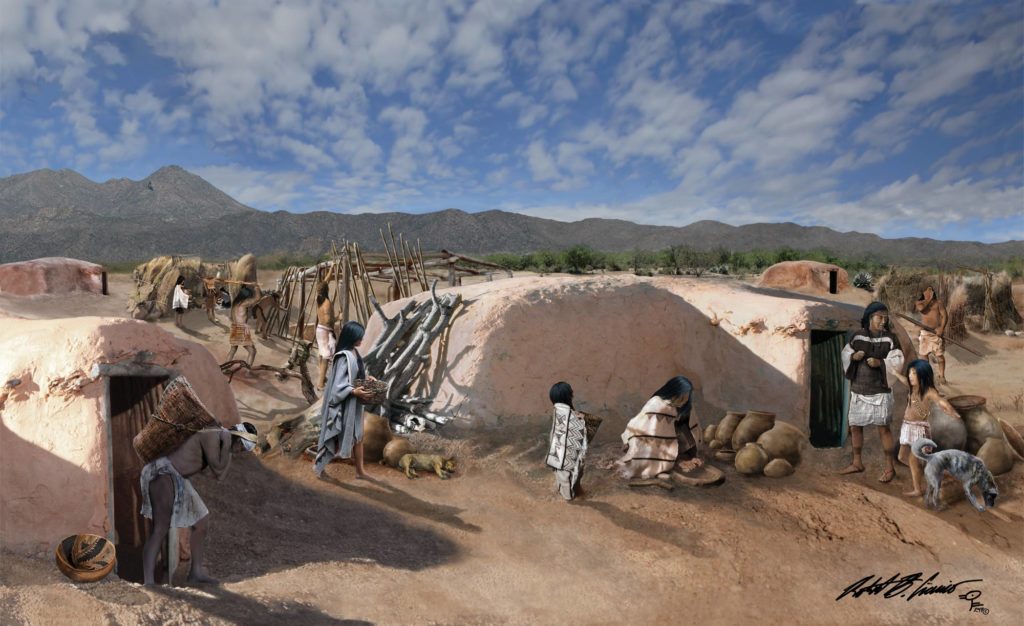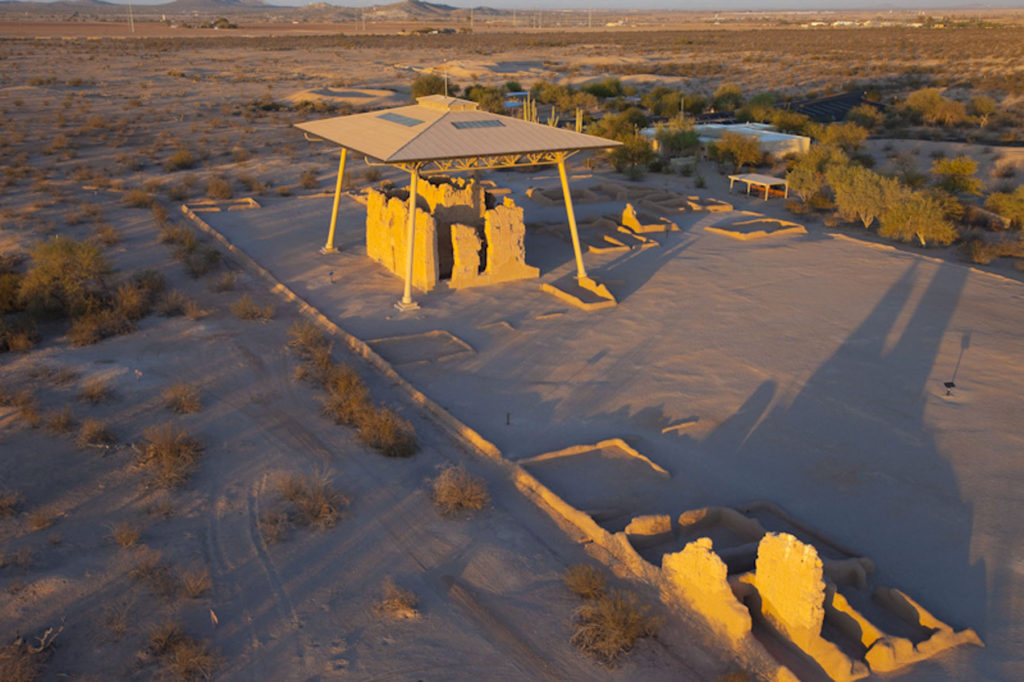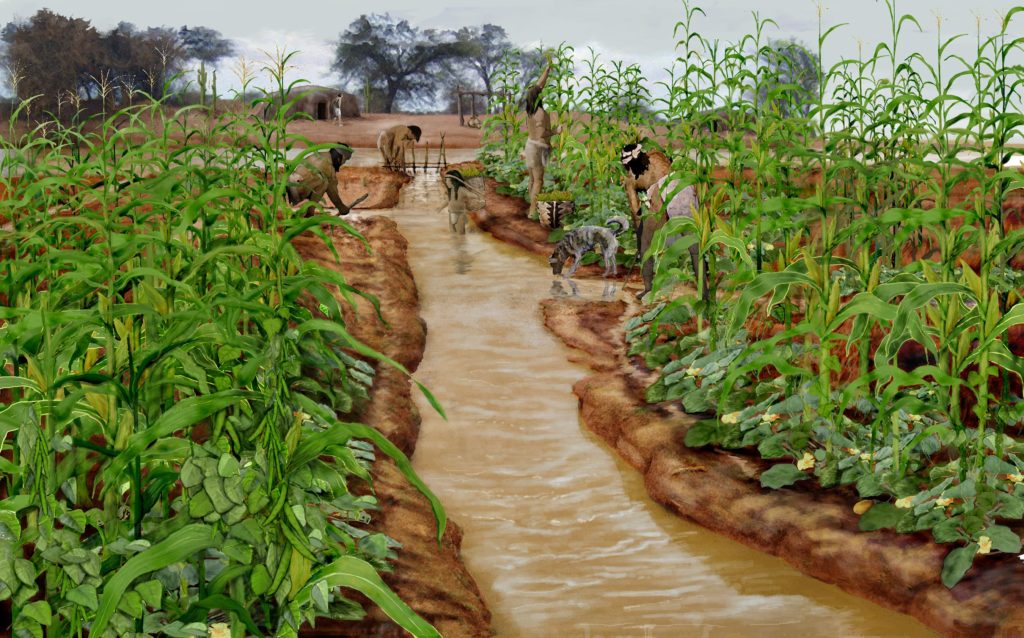- Home
- >
- Ancient Cultures
- >
- Hohokam
Banner image by Robert B. Ciaccio
People who resided in the Hohokam (ho-ho-kahm) region were among the ancestors of contemporary southern desert populations, such as the O’odham, as well as Pueblo populations and perhaps other populations in northern Mexico.

Early Hohokam settlements consist of clusters of shallow pithouses. Archaeologists find these dwellings in sets of three or four around small courtyards. Between about 800 and 1100 CE, many villages also had large earthen constructions that archaeologists identify as ballcourts. People used these for gatherings and for a ball game that was probably similar to those played among Mesoamerican societies.

Later in time, after about 1150 or 1200 CE, people in the Hohokam region began building their houses as aboveground compounds within a walled courtyard. Larger villages then had a different kind of central construction: large platform mounds, often with structures on top, that appear to have been the place for religious and political activities. Compound B at Casa Grande Ruins National Monument has two platform mounds.
Throughout their history, potters in the Hohokam region produced brown (in the Tucson Basin area) and buff (in the Phoenix Basin area) ware pottery, sometimes painted with geometric designs or life forms in red.

People in the Hohokam region employed massive-scale irrigation farming. Their vast canal networks include some canals more than 20 miles long. There are more than 500 miles of documented canals in the region, representing the largest-scale irrigation in North America. European settlers actually cleared out and reused many Hohokam canals hundreds of years later.
Want to learn more? Explore the major concepts, places, cultures, and themes that Southwestern archaeologists are exploring today in our Introduction to Southwestern Archaeology.
Details
Related to This
-
Location Romero Ruin (Catalina State Pa...
-
Location Pueblo Grande Museum and Archa...
-
Location Casa Grande Ruins National Mon...
-
Location Los Morteros
-
Post What’s in a Notch?